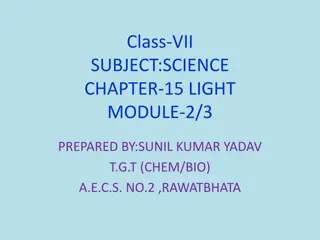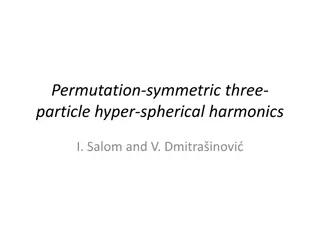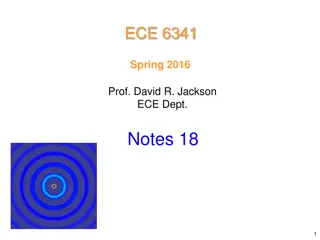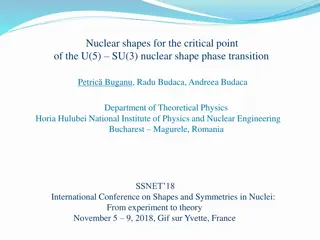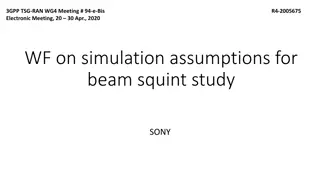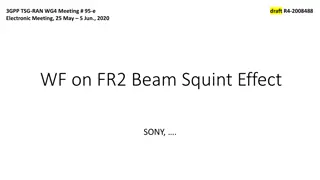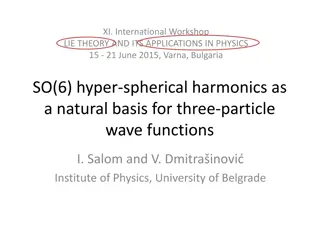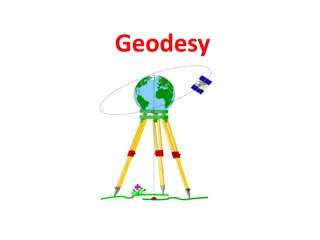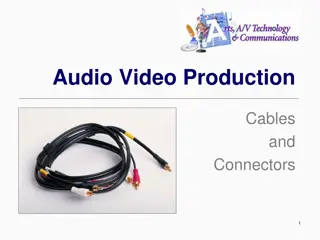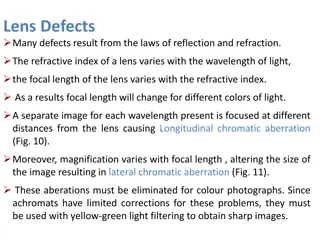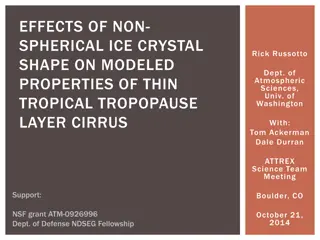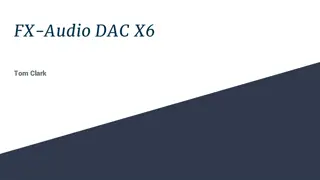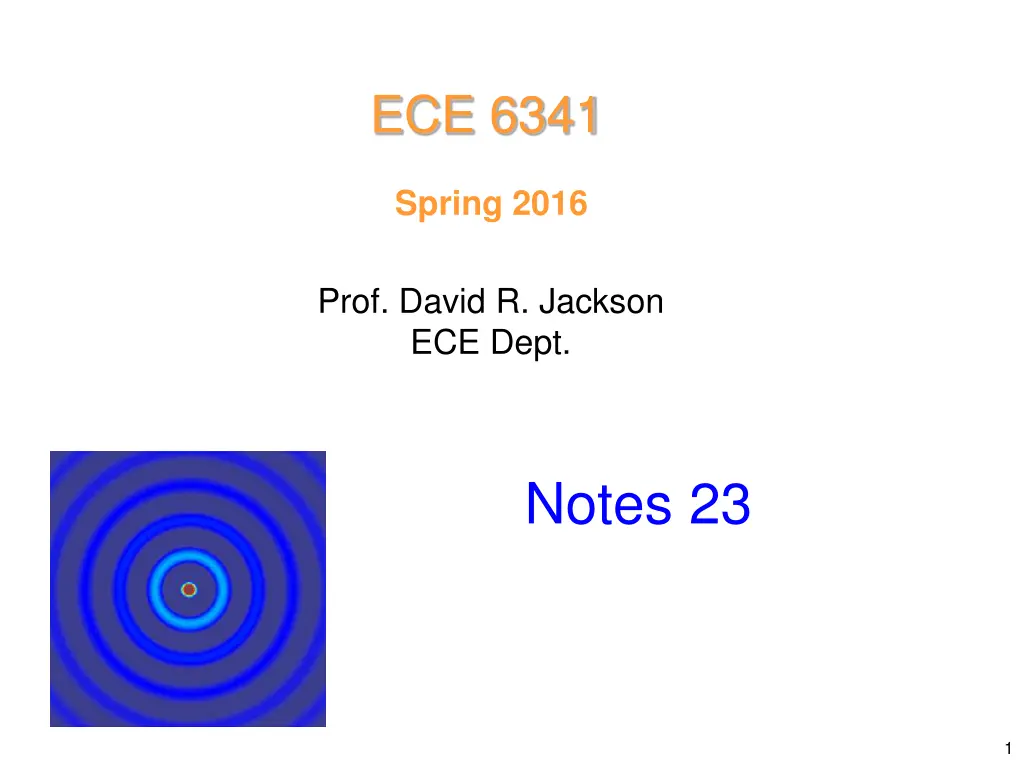
Understanding Spherical Coax Boundary Conditions and TEM Properties
Explore the concepts of Spherical Coax along with boundary conditions and TEM properties. Learn about the transmission line type of mode and how to derive potential satisfying boundary conditions. Analyze the fields and understand the complex equations involved in Spherical Coax theory.
Download Presentation

Please find below an Image/Link to download the presentation.
The content on the website is provided AS IS for your information and personal use only. It may not be sold, licensed, or shared on other websites without obtaining consent from the author. If you encounter any issues during the download, it is possible that the publisher has removed the file from their server.
You are allowed to download the files provided on this website for personal or commercial use, subject to the condition that they are used lawfully. All files are the property of their respective owners.
The content on the website is provided AS IS for your information and personal use only. It may not be sold, licensed, or shared on other websites without obtaining consent from the author.
E N D
Presentation Transcript
ECE 6341 Spring 2016 Prof. David R. Jackson ECE Dept. Notes 23 1
Spherical Coax z = =integer(360 allowed) o w m integer Q isallowed 1 2 Note: If 2> / 2, we have a bicone. m ( ) x P m ( ) P x m ( ) x Q m ( ) P x y x TMr ( ) ( ) kr ( ) ( ) = + (2) m m cos cos cos rA m H P AP 2
Spherical Coax (cont.) Boundary conditions: = 0 r E = , 1 2 = 0 rA = , 1 2 ( ) ( ) kr ( ) ( ) = + (2) m m cos cos cos rA m H P AP set to zero 3
Spherical Coax (cont.) = 1 ( ) ( ) + = m m cos cos 0 P AP 1 1 ( ) m cos cos P = 1 A ( ) m P 1 Hence ( ) m cos cos P ( ) ( ) ( ) m = 1 m m cos cos H P P ( ) P 1 ( ) m cos Normalizing by multiplying by , we have P 1 ( ) ( ) ( ) ( ) ( ) = m m m m cos cos cos cos H P P P P 1 1 4
Spherical Coax (cont.) = 2 ( ) ( ) ( ) ( ) = m m m m cos cos cos cos 0 P P P P 2 1 1 2 = D mp (The superscript D stands for double cone. ) This is a transcendental equation for : (These values must be found numerically.) ( ) ( ) kr = (2) D mp cos A m H r ( ) ( ) ( ) ( ) m m m m cos cos cos cos P P P P 1 1 D mp D mp D mp D mp 5
Spherical Coax (cont.) TEMrtransmission-line type of mode z Start by assuming Ar with m= 0: H ( ) 1 , , r E E H E 2 From TMr table: 2 1 r rA = = 0 E sin j r y 1 sin rA = = 0 H r x Now it is more convenient to use Q (x) instead of P (-x). ( ) kr ( ) ( ) = + (2) cos cos rA H AP BQ 6
Spherical Coax (cont.) TEM property ( ) 2 0 je = = = jkr 0: ( ) n H kr Choose ( ) ( ) = + jkr cos cos rA e AP BQ 0 0 2 1 A r = + = 2 0 E k A r (TEMr) r r 2 j Note: This potential satisfies the boundary conditions on both cones, since Er= E = 0. 7
Spherical Coax (cont.) ( ) ( ) = + jkr cos cos rA e AP BQ 0 0 0(cos ) P Examine the fields that come from the term = 0( ) 1 P x Note that 2 1 A A jk = = E r r r r j j r ( ) ( ) ( ) = = cos sin cos 0 P P 0 0 = H = = 0 0 E E 0 Hence, we don t need to consider P0. 8
Spherical Coax (cont.) ( ) = jkr 0cos Q rA e Choose + 1 2 1 1 + x x 1 2 1 cos 1 cos ( ) x ( ) = = cos ln ln Q Q 0 0 2 2cos 1 2 2 = ln 2 2sin 2 = lncot 2 9
Spherical Coax (cont.) Hence = jkr lncot rA e 2 2 1 A A A jk k = = = E r r r j r r A j r r 1 = H r r E H k = = = 10
Spherical Coax (cont.) A k = E r r k = jkr ln cot e 2 r 1 1 2 k = 2 jkr csc e 2 r cot 2 1 1 r 1 1 1 r 1 = = jkr jkr e e 2sin cos sin 2 2 2 2 Note: The constant in front will be ignored. 11
Spherical Coax (cont.) z 1 r 1 = jkr E e sin H 1 E E = H 2 y Note: To compare with cylindrical coordinates, we can use sin r x = 12
Spherical Coax (cont.) z Voltage on the coax: B ( ) = E dr V r H A B 1 ( ) E = + + sin E rd E d E dr r A 2 2 = E rd 1 1 r 1 2 = jkr e rd sin y 1 1 2 = jkr e d x sin 1 2 2 ( ) = ( ) jkr lntan V r e = jkr lntan V r e 2 2 1 1 13


